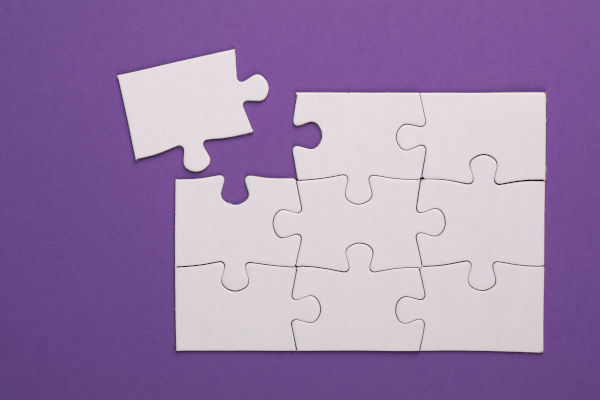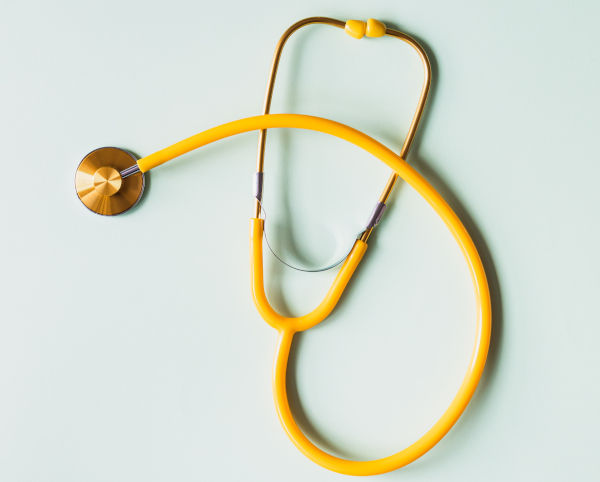
What is chronic low back pain?

Symptoms of chronic low back pain

What causes chronic low back pain?

Diagnosis of chronic low back pain

Treatment of chronic low back pain

Who treats chronic low back pain?

Videos on chronic low back pain

Additional resources
What is chronic low back pain?
Back to topLow back pain is extremely common, with close to 80% of adults reporting that they have experiencing bothersome low back pain. Most episodes of low back pain resolve on their own within a few days to weeks, without requiring medical intervention. However, about 20% of people with low back pain will go on to develop more chronic symptoms. Chronic low back pain is defined as pain in the back or buttocks that has been present for at least 12 weeks.
Chronic low back pain is very common, affecting at least 10% of people. This condition seems to be equally common in men and women. Risk factors for developing chronic low back pain include older age, poor fitness level, overweight or obesity, and occupational activity.
Chronic low back pain very frequently occurs in people who have other pelvic pain conditions, such as endometriosis, bladder pain syndrome, and pelvic floor myofascial pain. The back and pelvis inherently function together. So abnormal function or pain that occurs in one location can lead to abnormal function in neighboring locations.
Symptoms of chronic low back pain
Back to topLow back pain symptoms can vary from person to person, and symptoms can fluctuate over time for the same person. The most commonly described symptoms of low back pain are aching, dull, sharp, or shooting pain in the back. But some people may experience pain, numbness, or weakness in the legs, reduced flexibility and range of motion, or decreased ability to stand up straight.
What causes chronic low back pain?
Back to topMost cases of low back pain begin with mechanical injury – in other words, stretching or tearing injuries to the muscles or ligaments of the back, which are also called strains and sprains. These injuries are often associated with activities like heavy lifting, twisting, or overstretching. The vast majority of episodes of low back pain that are caused by muscle or ligament injuries improve within a few weeks, and usually only require supportive care, like rest, heat, or over the counter medications. However, some people can develop more chronic pain even after the injury to the muscles and ligaments has healed.
Other causes of low back pain include problems with the bones or discs that make up the spine. The spinal column is made up of bones, called vertebrae, and intervertebral discs, which are rubbery cushions between the bones. As we age, these intervertebral discs start to become less rubbery and provide less cushion between the bones. In some cases, the discs can actually bulge out and press on the actual spinal cord or nerves nearby. The vertebrae and spinal joints are also affected by processes of aging or accumulated wear and tear, including conditions like arthritis or osteoporosis. Low back pain that results from damage to these structures may be more likely to become chronic. Some people have skeletal or spinal column abnormalities, such as scoliosis, lordosis, or ankylosing spondylitis, that can lead to chronic low back pain.
It is important to note that the severity of pain that a person experiences may not correlate with the degree of injury to the muscles, tendons, vertebrae, or discs. This is because the brain plays a critical role in perception and processing of pain signals.
Diagnosis of chronic low back pain
Back to topThe diagnosis of chronic low back pain is based on symptoms and a physical exam. Your doctor will probably ask questions about when and how the pain began, where you are experiencing pain, what types of activities or positions worsen pain, in addition to questions about your general medical history and prior back pain episodes. They will perform an examination of your back and sometimes examine function of nerves in nearby areas. Based on this information, they may recommend an imaging study, such as an X-ray or MRI, to rule out other cases of pain, but imaging is often not indicated or helpful.
Treatment of chronic low back pain
Back to topTreatment of chronic low back pain will depend on specific symptoms or causes, but usually involves a multimodal approach – in other words, using several strategies at the same time.
YOU are the most important person when it comes to managing chronic low back pain. The most effective strategies to treat low back pain are things that you do yourself. We’ve reviewed several strategies here and provided links to related modules.
If your symptoms don’t resolve within a few months or if pain is significantly limiting your function, you should ask your health care provider about whether a referral to a physical therapist may be appropriate. We’ve also reviewed several other treatments and medications in the module below that you may want to discuss with your health care provider. Finally, if symptoms are not improving, you may benefit from a referral to a physical medicine and rehabilitation (PM&R) specialist, also called a physiatrist, as they can assess whether additional testing or procedures may be indicated.
Self-Care
- Heat or cold. Heating pads or ice packs are easy and frequently effective options. There are also topical creams or ointments, often available over the counter, that stimulate the nerves in such a way to create sensation of heat or cold, and many people find these to be helpful for pain.
- Over the counter medications. Analgesic medications, such as acetaminophen and NSAIDs may be helpful during exacerbations of low back pain. However, you should talk to your doctor about alternatives if find that you are using these medications on a regular basis.
- Pacing activity. When you have an exacerbation of low back pain, lying down may feel like the only thing you can do to get relief. Unfortunately, bedrest is not good for low back pain! The best thing you can do during an episode of low back pain is gentle stretching and walking, as these activities help to improve the function of the muscles and decrease the spasms that may be contributing to pain. However, it is important to take it easy during an exacerbation. Do not continue to do vigorous exercises or heavy lifting if it aggravates pain. See Pacing for tips.
- Physical activity. Improving the overall strength and function of your core and back muscles can help prevent or decrease episodes of low back pain. Yoga has been shown to be helpful for both short-term and long-term management of back pain as this engages the core muscles in a functional way without overstraining.
- Maintain a healthy weight. Being overweight or obese places a lot of additional strain on your spine, muscles, and joints. If you are overweight, losing even a small or modest amount of weight has been shown to significantly improve back pain, particularly when combined with regular exercise.
- Posture and ergonomics. Be mindful of your posture when sitting or standing for a long period of time. Wear comfortable, low-heeled, supportive shoes. Try to keep your back in a neutral and supported position. If your job involves sitting for long periods, make sure that you have a supportive chair with good lumbar support and that your keyboard and screens are at a height that keeps your back and neck in a neutral position. Try to get up and go for a short walk (to the bathroom or just down the hall) every couple of hours. If you need to lift heavy objects, learn about safe lifting techniques, such as lifting from the knees and legs while keeping your stomach muscles pulled in and your head down. Keep your back straight when lifting and do not twist while carrying a heavy object. Your primary care provider or physical therapist should be able to provide more information if you are not sure how to improve posture or ergonomics. Your employer may have an occupational health office that can give you instructions or other resources to help improve ergonomics, or you may be able to ask for a referral to an occupational therapist. See Occupational Therapy.
- TENS unit therapy. If muscles or ligaments are contributing to low back pain, you may find a TENS (transcutaneous electrical neuromuscular stimulation) unit to be helpful. See TENS unit therapy.
- Relaxation and Mindfulness. Techniques such as relaxation and mindfulness can be very helpful to manage pain, especially during pain exacerbations. Deep breathing and other techniques introduced in the Relaxation and Mindfulness module increase parasympathetic activity, which may help reduce tension in the low back muscles.
Professional Care
- Physical therapy. Physical therapy can be extremely helpful for managing low back pain. Physical therapists may be able to improve pain and function through gentle manual release techniques or by using devices such as ultrasound, cupping, or laser therapy. Physical therapy works best if you are an active participant in the process. In other words, it is not intended to be a massage therapy session. Rather, the physical therapy focuses on retraining the muscles. This requires time and practice, similar to developing any other new skill or technique. The physical therapist will give you an individualized home program, which will include exercises to relax and strengthen the affected muscle groups. Several studies have shown that patients who fully participate in their home program have greater improvement in pain and are less likely to have recurrent pain episodes. Your home program is the key to your success!
- Medications. The medications that are likely to help with low back pain differ based on why a person is experiencing pain. For example, NSAIDs may be most beneficial for people who have low back pain due to osteoarthritis. Muscle relaxants can be very beneficial in cases of sprains and strains or chronic myofascial pain. Medications that change levels of neurotransmitters and impact function of nerves, such as gabapentinoids and some select antidepressants are more likely to be beneficial for people who have neuropathic or nociplastic contributions, or more widespread pain condition such as fibromyalgia. (See Pain Mechanisms). You should talk to your health care provider about which options may be most helpful for you.
- Acupuncture and acupressure. Acupuncture is a traditional Chinese medicine therapy that targets specific points along “meridians” or pathways that run through the body. Acupuncture uses very thin needles to target these points, whereas acupressure uses external manual application of pressure. See the Acupuncture and acupressure module for more information, including details on how to perform acupressure yourself. Your primary care provider or physical therapist may have some recommendations for acupuncture providers in your area.
- Procedures and surgery. There are a few types of minor procedures that may be beneficial for some people with chronic low back pain, such as trigger point injections or specialized nerve blocks. These are typically performed by a pain medicine specialist. Most people with chronic low back pain don’t need to undergo surgery to treat this condition, but there are a few exceptions. If you are considering surgery, you should have a detailed conversation about risks and anticipated benefits of surgery, as many surgical procedures to treat back pain have mixed results in terms of pain improvement and are associated with significant risks and recovery time. Your pain medicine specialist or primary care provider can make recommendations for surgeons if appropriate in your situation.
Who treats chronic low back pain?
Back to topLow back pain is typically managed by a primary care provider. They can help coordinate appropriate evaluation and initial treatments such as medications and physical therapy.
Physical therapists are an extremely important part of the team for management of low back pain. They can help treat the muscle and ligament abnormalities that contribute to low back pain. They can also help you develop better habits and long-term strategies to reduce the strain on your muscles and ligaments, which can decrease the chance that your low back pain recurs or becomes chronic.
If low back pain becomes chronic and is not adequately improved with these initial therapies, your primary care provider may refer you to a pain medicine specialist. Pain medicine specialists are physicians who have trained in physical medicine and rehabilitation (PM&R), anesthesiology, or neurology, and then completed additional fellowship training focusing on pain management strategies. They typically have extensive experiencing in managing chronic low back pain. They use a combination of non-pharmacologic, pharmacologic (medications), and procedural interventions.
If you have a spine condition contributing to chronic low back pain, your primary care provider may refer you to a spine surgeon who can discuss whether procedures or surgery may be beneficial.
Videos on chronic low back pain
Back to topAdditional resources
Back to top[American Society of Regional Anesthesia and Pain Medicine] (https://www.asra.com/patient-information)

